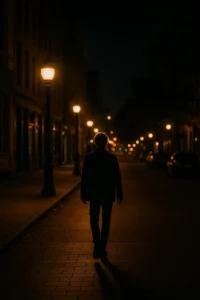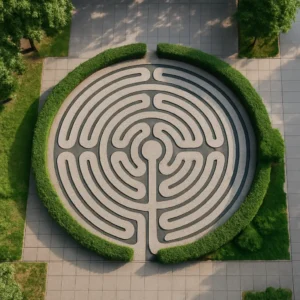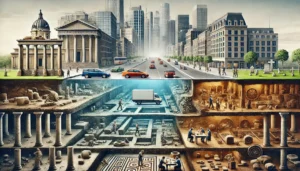Ancient buildings stand as monumental testaments to human creativity, culture, and resilience. We often admire their beauty and architectural brilliance, but few people are aware of the layers of history and mystery they hold. Behind every weathered stone and worn column, there are untold stories of forgotten civilizations, secret purposes, and cultural transformations. These structures are more than ruins—they are living records of the past, waiting to be understood.
Built on Top of Forgotten Worlds
Many ancient buildings are constructed over the ruins of older civilizations. Cities like Athens, Rome, and Cairo are built in layers, with each generation stacking new life over the old. Beneath today’s landmarks often lie remnants of temples, homes, and roads from thousands of years ago. In some cases, entire underground cities remain hidden. This layering shows how human history constantly builds upon itself, both literally and symbolically.
Secret Chambers and Hidden Pathways
Some ancient structures were designed with secrecy in mind. From hidden chambers in the Great Pyramid of Giza to secret passages in medieval castles, these spaces were used for protection, rituals, or escape. Even today, modern technology continues to reveal new voids and corridors within ancient buildings that were previously unknown. Their original purposes remain topics of fascination for archaeologists and historians alike.
Symbolism and Sacred Meaning
Ancient architecture was never just functional—it carried deep spiritual and cultural significance. Structures like Stonehenge and Machu Picchu were carefully aligned with celestial movements, suggesting they were used for astronomical or religious purposes. Temples were adorned with carvings and symbols meant to communicate stories or invoke divine protection. Every column, angle, and ornament served a purpose beyond aesthetics—it was a message to the heavens or a sign of power.
Transformation Through Time
Throughout history, buildings have changed hands and identities. A pagan temple might become a Christian church, then a mosque, and later a museum. The Hagia Sophia in Istanbul is one of the most famous examples of such transformation. These shifts often led to structural changes, removed inscriptions, and repurposed spaces, erasing parts of the original history while adding new layers of meaning.
Legends, Myths, and Ghost Stories
Ancient buildings are often surrounded by folklore. Castles are said to be haunted, temples are linked to divine miracles, and ruins are believed to be cursed. These stories pass through generations, mixing fact and fiction until they become part of the identity of the building itself. Whether it’s the legend of a hidden treasure or the ghost of a former ruler, these myths keep history alive in a unique and emotional way.
The Forgotten Hands Behind the Stones
We remember the kings, emperors, and architects who commissioned these structures, but the workers who built them remain unnamed. The laborers, artisans, and engineers—often enslaved or poorly compensated—left their mark through the quality and endurance of their work. Their contributions are hidden in plain sight, embedded in every stone and design that has stood the test of time.
Modern Discoveries Still Uncovering the Past
Thanks to modern tools like ground-penetrating radar and digital mapping, archaeologists are still discovering new elements of ancient buildings. Hidden rooms, buried foundations, and lost artwork are constantly being revealed. These discoveries challenge long-held beliefs and help us reconstruct lost chapters of human history.
Conclusion: Silent Witnesses of Civilization
Ancient buildings are more than beautiful ruins—they are silent witnesses of war, worship, love, power, and innovation. Every stone carries the weight of human experience. By exploring the hidden history behind them, we gain not only a better understanding of the past but also a deeper connection to our shared human story.







